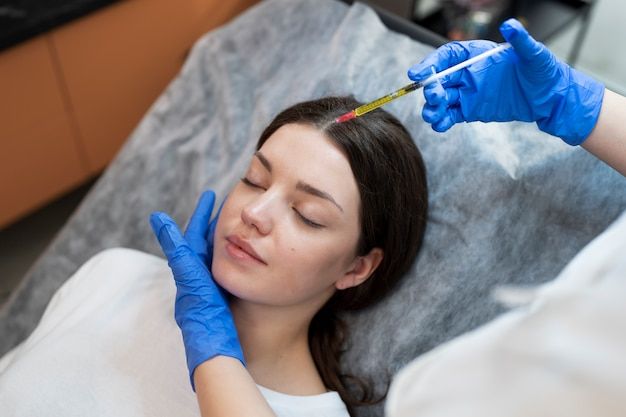What is PRP therapy?
PRP is called platelet-rich plasma and platelet-rich plasma. This is a three-step medical procedure in which a person’s blood is drawn so that it can be processed. After this, an injection is given to the scalp. Many people believe that this therapy can be helpful in increasing the natural growth of hair. Can help by increasing blood supply to hair follicles and keeping hair thick. However, this therapy can be suggested for problems like hair loss. However, this therapy has not been researched yet to prove that PRP is an effective treatment for hair loss. PRP Dehradun is often used for problems such as injured tendons, ligaments and muscles. Let us get information on PRP therapy today.
How is PRP therapy done?
Information on PRP Therapy:
If you are thinking of getting PRP therapy done, then tell the doctor about your medications like if you take any special medicines or take blood thinners etc. Before performing this procedure, the doctor may ask some health-related questions.
- The doctor will first take and prepare your blood sample. PRP injections may be given depending on your sample. The blood sample is placed in a machine in which the machine rotates rapidly to separate the components of the blood. This process may take up to 15 minutes.
- When isolated, plasma is injected into the affected area, but ultrasound is used to precisely pinpoint the areas. Anaesthetic is used in the procedure of PRP injection. Therefore, after getting this procedure done, the person should go home with a family member.
Benefits of PRP therapy?
PRP therapy may have some of the following benefits.
- PRP increases collagen and elastin production which plumps and tightens the skin. Effectively corrects wrinkles and lines. Because it increases collagen, it is a great treatment for improving overall skin texture and tone. It is especially good for those who suffer from rosacea or acne.
- PRP is very effective for treating difficult areas, such as the delicate area under the eye where individuals often see signs of ageing and where no laser can be used.
- PRP is made using only natural ingredients without using any foreign manufacturers. This treatment procedure involves drawing a small sample of your blood. It is then spun in a centrifuge for about five minutes to separate the plasma from other blood particles. PRP i.e. platelet-rich plasma is then returned to the treatment area to stimulate collagen and elastin production.
Disadvantages of PRP therapy?
Information on PRP:
In PRP therapy, the patient’s own blood is injected into the scalp, so there is no risk of infectious disease. Still, the injections that are involved in the therapy may carry some risks of harm.
- Such as injury to blood vessels or nerves.
- Having an infection.
- Calcification at injection points.
- Scarring.
Complications of PRP therapy for hair?
Doctors try to cure the problem with herbal procedures and medicines. But when you consult a doctor for the first time, the doctor remains against PRP therapy for hair loss.
Like the person has thin blood or is a heavy smoker.
Have a past history of alcohol or drug abuse.
If a person has been diagnosed, doctors may not allow you to have this treatment if you are at higher risk.
Like acute or chronic infection.
Cancer problem.
Chronic liver disease.
Chronic skin disease.
Hemodynamic instability.
Low platelet count.
Thyroid disease.
Metabolic disorders.
Platelet dysfunction syndrome.
Systemic disorders.




